Bristol's Brunel Birthday Bash
by Jean Burnett
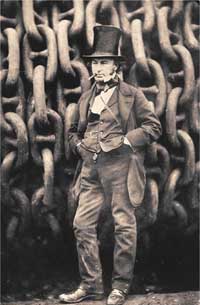 In 2006, the city of
Bristol celebrated the 200th anniversary of the birth of Isambard
Kingdom Brunel, the greatest engineer of the 19th century. The
place that contains some of Brunel's greatest achievements pulled
out all the stops in a year long festival that also highlighted a
great maritime city that is re-inventing itself in the 21st
century. In 2006, the city of
Bristol celebrated the 200th anniversary of the birth of Isambard
Kingdom Brunel, the greatest engineer of the 19th century. The
place that contains some of Brunel's greatest achievements pulled
out all the stops in a year long festival that also highlighted a
great maritime city that is re-inventing itself in the 21st
century.
There is a statue of Brunel, the diminutive genius, with his
cigar and his tall hat in the city centre, only ten minutes walk
along the harbour side from one of his most famous creations.
The SS Great Britain, the world's first great ocean going
liner-propeller driven, steam powered and iron clad-was built in
1839. It carried thousands of emigrants to Australia and later to
the US. After being found derelict in the Falkland Islands
(Malvinas), she was towed back to Britain and has been carefully
restored. She now sits in dry dock in all her glory. Brunel later
designed a even bigger ship, the Great Eastern which was used to
lay the first transatlantic telephone cables.
Up in the elegant Georgian suburb of Clifton is the construction
that has become Bristol's symbol. The small but perfectly formed
Clifton Suspension Bridge spans the Avon Gorge and is one of the
world's great engineering feats. Brunel's bridge, completed in
1868 and built for horses and carriages, was so ingeniously
constructed that it now bears the weight of four million cars
every year.
Visitors to the city often arrive at Brunels's magnificent gothic
railway station, Temple Meads. He was the architect of the GWR,
the Great Western Railway linking London with the West Country; a
commission he obtained at the age of twenty seven. At the London
end, Paddington Station was also a Brunel design. Work started on
the railway in 1836 and was completed in 1841. Dubbed "Brunels's
billiard table," local people referred to it affectionately as
"God's Wonderful Railway."
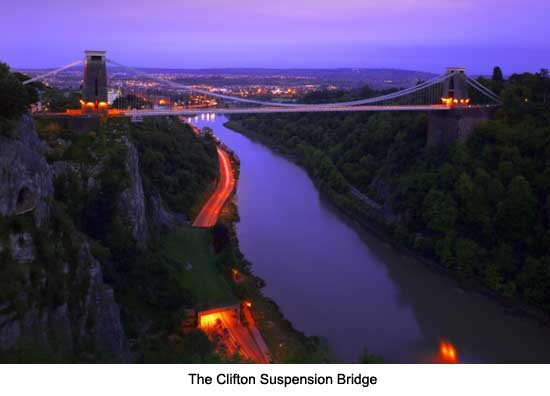
He also worked on a prototype for the first tunnel under the
River Thames in London. A man full of ideas, Brunel was a walking
"entente cordiale," being half French and half English. His
father was a Royalist and an engineer who fled to England to
escape the French Revolution. He married a Somerset girl and they
educated their son at home. Young Isambard showed a great
aptitude for design and mathematics.
Bristol has a full program of events planned throughout the year;
the city is the ideal starting point for visits to the area. Bath
is just a few miles away for lovers of Jane Austen and Georgian
architecture and London is one hour and forty minutes away by
train.
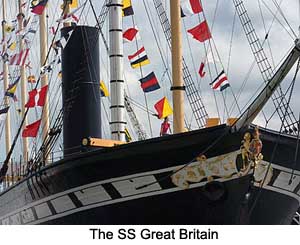 The
city's maritime glories may be in the past but there are vivid
reminders all around. In the harbour you can see the little
galleon, the Matthew, in which the Italian Cabot brothers
sailed to the new world in 1497, landing at Newfoundland just a
year before Columbus finally reached mainland America. The
galleon is a perfect facsimile of the original, built to retrace
the expedition in 1997. The
city's maritime glories may be in the past but there are vivid
reminders all around. In the harbour you can see the little
galleon, the Matthew, in which the Italian Cabot brothers
sailed to the new world in 1497, landing at Newfoundland just a
year before Columbus finally reached mainland America. The
galleon is a perfect facsimile of the original, built to retrace
the expedition in 1997.
There is a statue to John Cabot (Giovanni Cabote) on College
Green in the city centre. The brothers came to Bristol to seek
financial backing for their expedition from the city's wealthy
merchants. Bristolians will tell you proudly that "America was
discovered from here!"
Although the medieval heart of the city was largely destroyed by
bombing during the Second World War, some intriguing corners
remain-a few lovely churches, a length of city wall, the
cathedral on College Green and the quaint Christmas Steps lined
on both sides with old shop fronts. Just off the centre is St
Nicholas' Market and the leather- covered columns known as the
Nails. Merchants settled their accounts there, originating the
saying "to pay on the nail" i.e. promptly.
The finest ships once sailed from the harbour "all shipshape and
Bristol fashion." Now, only pleasure boats and floating
restaurants remain. The harbour scene is a lively one with many
bars and restaurants and two art centres containing cinemas and
art galleries.
The City Museum on Park Street, next to the main University
Tower, is a good place to see a panorama of Bristol's history
from its medieval days as a wine importing centre to its
involvement in the slave trade and its transformation in the 20th
century into a centre for cigarette production. It's a wicked old
city, many will tell you; its wealth built on alcohol, slaves and
tobacco. Today, the city is known as a booming IT area.
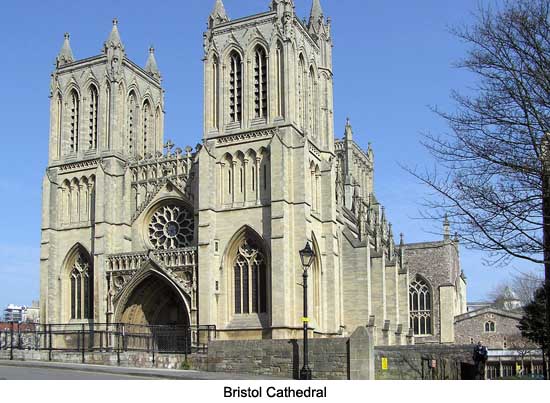
If you wander around the centre you will find many quirky corners
such as Europe's smallest chocolate factory, Guilbert's, tucked
away in Leonard Lane near the market. Stop there for a delicious
treat. Linger and admire Queen's Square with its fine Georgian
houses built in the 1790s by those rich merchants. Today they are
mainly offices. On the front of no. 33-35 you will see a blue
plaque dedicated to Woodes Rogers, a Bristol seaman and notorious
pirate who eventually became Governor General of the Bahamas.
There is a coffee shop named after him on Park Street.
Nearby is another plaque denoting the Τunofficial' American
consulate in Bristol immediately after the War of Independence.
At a time when there were no diplomatic relations between Britain
and the new American Republic the merchants of Bristol invited
Elias Vanderhorst over from Boston in 1792 in defiance of the
government in London. They needed a go- between to facilitate
their American trade. In his diary, preserved in the city
archives, the consul related that he had such a great social life
in the city he was scarcely able to do any work. He stayed until
1815.
In the centre of the Square is a statue of King William 1V on
horseback, said by many critics to be the finest equestrian
statue in Europe; judge for yourself. Just around the corner is
the Theatre Royal, England's oldest working theatre, founded in
1764 and guaranteed to provide a good evening's
entertainment.
Young visitors can be kept happy at the zoo in Clifton or in the
new hands-on science museum in the Millennium Centre. This
complex, known as At-Bristol, combines a science wing, a Wildwalk
and an Imax theatre bringing science, nature and art together. An
entire morning can be spent enjoying an exploration of the SS
Great Britain followed by ferry trips around the harbour.
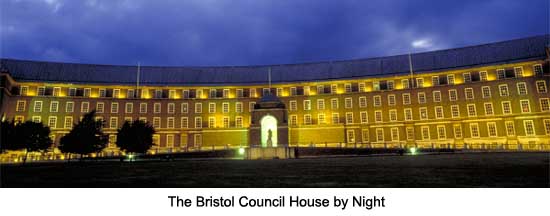
More Information:
We regret that we no longer have the resources to maintain up-to-date links and/or hours and pricing details for the various sites and attractions listed on this website. For more information about the location(s) listed above, please use your favorite search engine or visit Wikipedia.
Jean Burnett is a freelance writer, novelist and tutor currently living in Bristol, England. She has travelled widely and lived in the USA for several years. Her passions are books, travel and dark chocolate.
Article © 2006 Jean Burnett
SS Great Britain photo courtesy of Graham Flack. Bristol Assembly House photo courtesy of BritainonView.com. Clifton Suspension Bridge and Bristol Cathedral photos courtesy of (photographer) (via Wikipedia.org). Photo of Brunel courtesy of Wikipedia.org.
| 